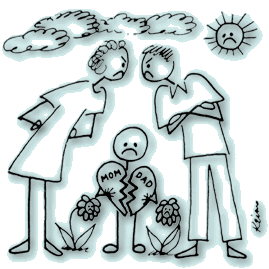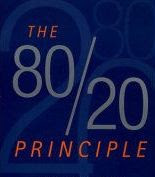Using Mediation in Mob Wars

The Sopranos, a TV show about a dysfunctional mob family, recently aired its final episode. One of the
story lines found in recent episodes is the increasing tension between Tony Soprano and Phil, a rival mob boss. At the climax of the storyline, Phil has had enough of Tony's "disrespect" and orders his thugs to take out Tony and his guys. In the second to last episode, guns blaze, bodies fall and it's wall to wall blood for an hour. When the episode ends, Tony has been fired by his shrink, most of his main guys are dead, along with various others, and he and what's left of his gang are holed up in a house, heavily armed.
I waited in anticipation for the final episode, wondering who would survive. When it finally aired, nothing happened for the first 20 minutes. Then, in the middle of a mob war, a mediation breaks out. Well, no one called it a mediation, but it sure looked like one. Tony and Phil's main guy, Butch, are talking on the phone. Butch wants to make peace, but Phil has already rejected the idea and rebuked Butch for not getting to Tony first. Tony and Butch talk about a neutral location. Sound familiar? It also has to be safe, everyone is frisked for weapons before the parties sit down in a cold factory. Bottled water is provided (that's a little different from the Center, as we draw water from a tap in the kitchen.)
"This has gone too far. It's time for a change," says Butch. Okay, that's about as close to an apology as you'll get from mobsters. Tony accepts the offer for a change, but he's still concerned about Phil and wants Phil's guys to do something about it. "We can't go there" responds Butch, "Do what you have to do." Tony brings up another issue: how to make up his sister's loss after her husband (Tony's brother-in-law) got whacked in a toy store. "Come on, it's my sister we're talking about here. She has to be taken care of." Phil's main guy pauses, then says, "We'll come up with a number." Everyone shakes hands because it has become a win-win situation. Tony moves his family back into their home.
The only loser is Phil, who gets whacked while standing in a gas station, waving goodbye to his grandchildren, strapped in car seats in the back of his SUV. Phil's wife gets out of the vehicle and rushes to her husband, even as the shooter is putting another bullet into Phil's chest. The SUV is still in gear and slowly rolls forward, crushing Phil's head. The producers don't actually show the head-crushing, but the sound effects are wonderful.
The lesson: Phil should have gone to mediation, instead of insisting on sticking with his position of wanting to wipe out Tony. When mobsters mediate, they find a peaceful solution. Too bad, Phil. You lose.
Chuck Hardwick
Client Services



































 Sometimes it is difficult for me to shut the mediator brain off. Recently I was having brunch with my best friend and he was venting to me about his relationship. He has been with the same person for the past five years and has never really been happy. We have had the same venting session every three months for the past five years. I always ask him why he stays and never can really tell me. Finally, this brunch I decided to open a can of mediation on him.
Sometimes it is difficult for me to shut the mediator brain off. Recently I was having brunch with my best friend and he was venting to me about his relationship. He has been with the same person for the past five years and has never really been happy. We have had the same venting session every three months for the past five years. I always ask him why he stays and never can really tell me. Finally, this brunch I decided to open a can of mediation on him.